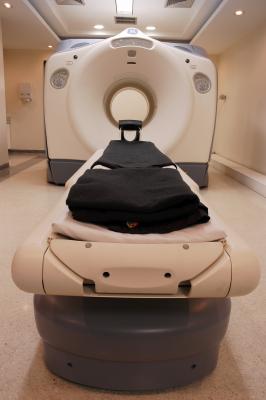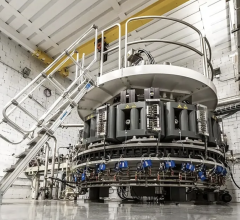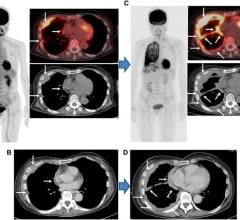
September 6, 2013 — For patients with degenerative cervical myelopathy, imaging with 18F-FDG positron emission tomography (PET) could act as a marker for a potentially reversible phase of the disease in which substantial clinical improvement can be achieved. According to research published in the September issue of The Journal of Nuclear Medicine, patients who exhibited hypermetabolism at the point of compression in their spine experienced improved outcomes after undergoing decompressive surgery.
Cervical spinal stenosis is a condition in which the spinal canal narrows in the neck. While many patients lack symptoms, once symptoms appear, it usually indicates the presence of myelopathy. This compression can lead to progressive neurologic deficits, such as numbness, weakness or tingling in a leg, foot, arm or hand.
In the study "Hypermetabolism in 18F-FDG PET Predicts Favorable Outcome Following Decompressive Surgery in Patients with Degenerative Cervical Myelopathy," researchers aimed to assess the regional changes of glucose metabolism of the cervical spinal cord using 18F-FDG PET.
"To date, experiences with 18F-FDG PET in symptomatic patients with degenerative cervical spine stenosis and consecutive compressive myelopathy are very limited," said Norbert Galldiks, M.D., one of the lead researchers of the study. "In the present study, we present the results of preoperative magnetic resonance imaging (MRI) and 18F-FDG PET imaging and postoperative follow-up imaging 12 months after decompressive surgery. Imaging findings were correlated with the clinical outcome."
Researchers observed two significantly different patterns of 18F-FDG uptake among the 20 study participants prior to surgery—approximately half of the patients had increased 18F-FDG uptake at the site of spinal cord compression and were classified as myelopathy type 1, while the other half had inconspicuous 18F-FDG uptake and were classified as myelopathy type 2. Post-operatively, those with myelopathy type 1 had a marked decrease in 18F-FDG uptake, while myelopathy type 2 patients had only a moderate decline in uptake.
The overall outcome in myelopathy type 1 patients was favorable, and the patients showed significant improvement on their functional status assessment. In contrast, there was no significant clinical change in patients with inconspicuous 18F-FDG uptake.
"A hypermetabolism of the cervical spinal cord at the level of cervical spine stenosis as indicated by a locally increased 18F-FDG uptake seems to be a marker for a potentially reversible phase of a compression-induced cervical myelopathy," explained Galldiks. "The lesion of the spinal cord seems to be predominantly functional. Presence of this metabolic pattern reflects the time frame when decompressive surgery can lead to substantial clinical improvement. In order to stratify eligible patients for decompressive surgery, our findings may help to implement 18F-FDG PET investigations of the cervical spine in clinical routine."
For more information: jnm.snmjournals.org


 July 30, 2024
July 30, 2024 








